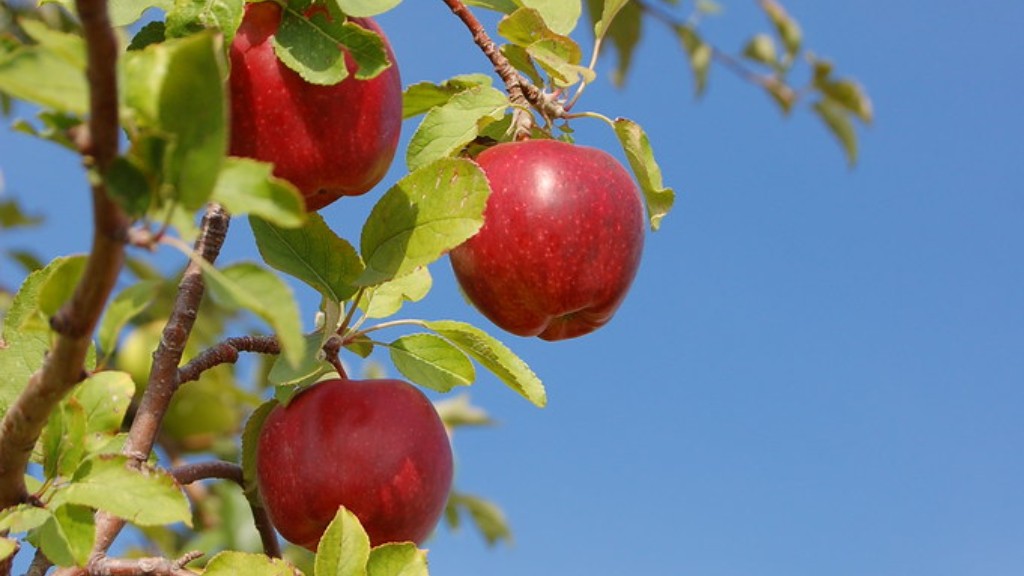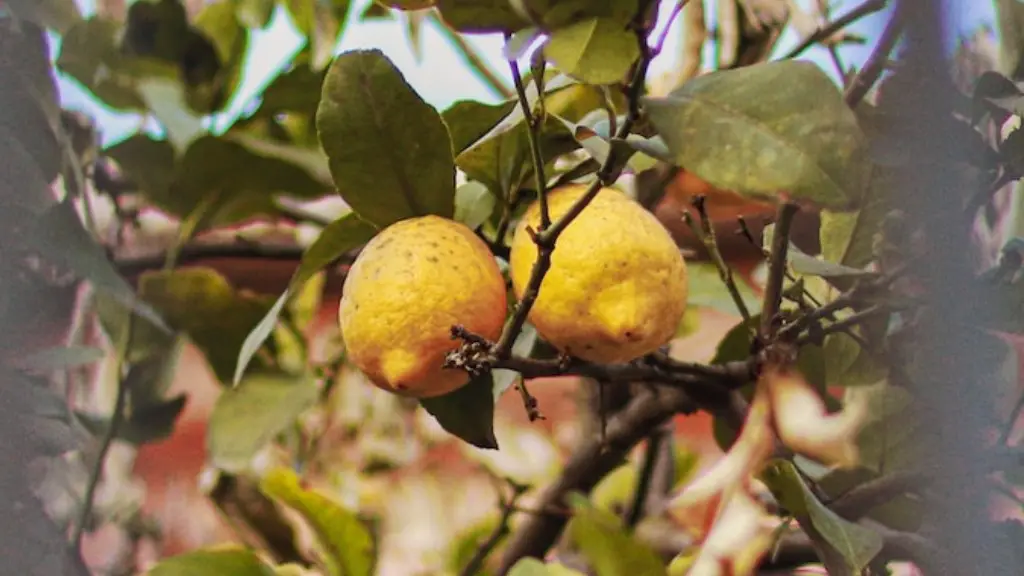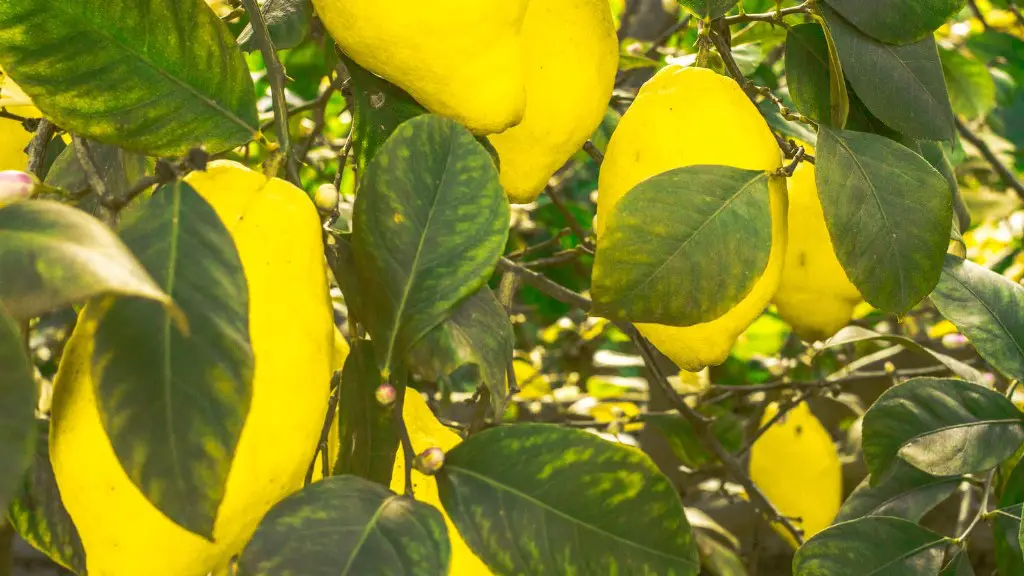Honeycrisp apple trees are a popular choice for homeowners and gardeners due to their high-quality fruit and beautiful blossoms. Properly caring for your apple tree will maintain its health and produce superior apples. Here are some steps for how to care for a Honeycrisp apple tree.
First, to ensure the tree thrives and produces good-quality fruit, it is important to plant it in a sunny spot in the garden. The tree needs at least six to eight hours of direct sunlight a day. Make sure the ground is well-drained, as Honeycrisp apple trees prefer moist, but not soggy, soil. Selecting the right soil type can have a major impact on the tree’s health and yield.
Second, feed your Honeycrisp apple tree yearly with an organic fertilizer to help it maintain maximum health. When fertilizing, it is important to spread the fertilizer evenly around the tree’s circumference, rather than in one spot. Apply fertilizer during the spring season just after the tree starts to bloom, but before the fruit starts to mature.
Third, water your tree regularly. Honeycrisp apple trees, like most fruit trees, require 1-4 inches of water a week. Too little or too much water can be harmful to your tree, so note the amount of rain and adjust your watering accordingly. As the apple fruits start to form, you may need to reduce watering.
Fourth, prune your Honeycrisp apple tree in the early spring. By removing dead or diseased branches and opening up the tree’s canopy, you will allow for better airflow, ensuring the tree’s health and increasing the amount of sunlight it receives. Additionally, pruning will help you control the size and shape of your tree.
Fifth, protect the tree from pests and diseases. Keep the area around your tree free of weeds, as they can grow too close to your tree and cause root damage. Monitor the tree throughout the growing season and, if you identify any pest or disease, take action immediately. Treat the tree with an insecticide or fungicide before any further damage is caused.
Finally, mulching is essential for all types of fruit trees. Spread a thick layer of mulch around the tree’s base to help retain water, limit weeds, and maintain the tree’s roots at an ideal temperature. Make sure to keep mulch about 2-3 inches away from the tree’s trunk to prevent rot or girdling of the roots.
Preparing the Planting Site
Good fruit tree care starts with the preparation of the tree’s planting site. Honeycrisp apple trees need well-drained, rich soil. Before planting, you should mix in a generous amount of organic material such as compost, to enrich the soil and retain moisture. The soil should also be tested for pH level and nutrient contents, so you can adjust it with fertilizer if necessary. In order to properly assess the soil, it’s best to have the soil tested before and shortly after planting.
Before planting your Honeycrisp apple tree, also consider if the soil content and climate of your area are favorable for growing this type of tree. Honeycrisp apples need well-draining soil and cool winters to develop properly. The tree needs at least four months of cold temperatures to go dormant and begin the next season’s growth. If the weather is not suitable for Honeycrisp apples in your area, consider planting varieties that thrive in the local climate.
Ensuring the tree is planted in an ideal location and soil is key for preventing root rot, ensuring maximum yields, and keeping your Honeycrisp apple tree healthy for many years.
Keeping the Tree Watered During the Summer
During the hot summer months, it’s essential to keep your Honeycrisp apple tree well-watered, as it needs an adequate amount of moisture to produce good-quality fruit. Depending on your local climate, the tree will need 1-4 inches of water a week. In especially dry and hot climates, the tree may need more frequent watering during peak summer months.
To keep the soil moist, cover it with a thick layer of mulch. Mulch also helps to prevent weeds and keep the soil at a consistent temperature. The mulch should be about 2-3 inches away from the tree’s trunk, so as not to cause rot or strangulation of the apple tree’s roots.
If you choose to use a drip system to water your Honeycrisp apple tree, make sure to check that it is running correctly every month. If you are using a garden hose, make sure the connection is secured and make sure to adjust the sprayer so it evenly moistens the soil around the tree. Also, if you are using a hose, avoid direct contact at the trunk, as this can damage the tree.
Protecting Against Pests and Diseases
Although a healthy Honeycrisp apple tree is resistant to many diseases and pests, it is still important to take preventive measures to ensure optimum fruit yields and tree health. One of the best ways to reduce the chances of pests or diseases is to keep the area around the tree free of weeds, grasses, and weeds. While these may be aesthetically pleasing, they can cause root damage or spread disease.
Another important aspect of protecting your Honeycrisp apple tree from pests and diseases is monitoring it carefully during the growing season and responding quickly to any signs of a problem. A good way to stay on top of any problems is to inspect the tree every week or two. If you notice any signs of disease or pests, take action immediately by identifying and treating the problem.
Finally, there are pesticides and fungicides that you can use to protect your Honeycrisp apple tree from pests and diseases. However, these products should be used sparingly, as they can do more harm than good. If you must use a pesticide or fungicide, make sure to read the product labels and follow all instructions precisely.
The Importance of Pruning and Trimming
Tree pruning and trimming is an important part of caring for a Honeycrisp apple tree. Pruning lets you shape the tree and encourages new growth. This can also help to open up the canopy and enable better airflow, which will reduce the chances of pests and diseases. Pruning can also help to reduce the size of the tree and ensure consistent fruit yields.
Whether you choose to prune your tree yourself or hire a professional, it’s important to know when and how to prune effectively. The best time to prune is just after the tree has started to bloom, and before the fruit starts to mature. Pruning should be done carefully and late in the season, as pruning too early or too much can damage the tree.
When pruning your Honeycrisp apple tree, look for dead or diseased branches, as well as shoots that grow too close together and cross over each other. When doing your pruning, try to keep an even balance and avoid over-cutting. Always use a sharp pruning tool and be extra-careful when climbing the tree.
Fertilizing Yearly
Fertilizing is an important aspect of fruit tree care, as it helps to keep the tree healthy and increase yields. For honeycrisp apple trees, it is best to use a balanced fertilizer that has equal parts of nitrogen, phosphorus, and potassium. An organic fertilizer is especially recommended, as it will add additional micronutrients to the soil.
When fertilizing your Honeycrisp apple tree, apply the fertilizer in mid-spring once the tree starts to bloom, but before the fruit begins to mature. Spread the fertilizer evenly around the tree’s circumference, rather than in one spot. Also, avoid fertilizing in periods of drought, as the extra nutrients can increase the chances of pest and disease.
Finally, make sure to water the tree after applying the fertilizer. This will ensure the nutrients are absorbed by the soil and that the tree’s roots are hydrated and healthy. Additionally, it will reduce the chances of fertilizer burn.





